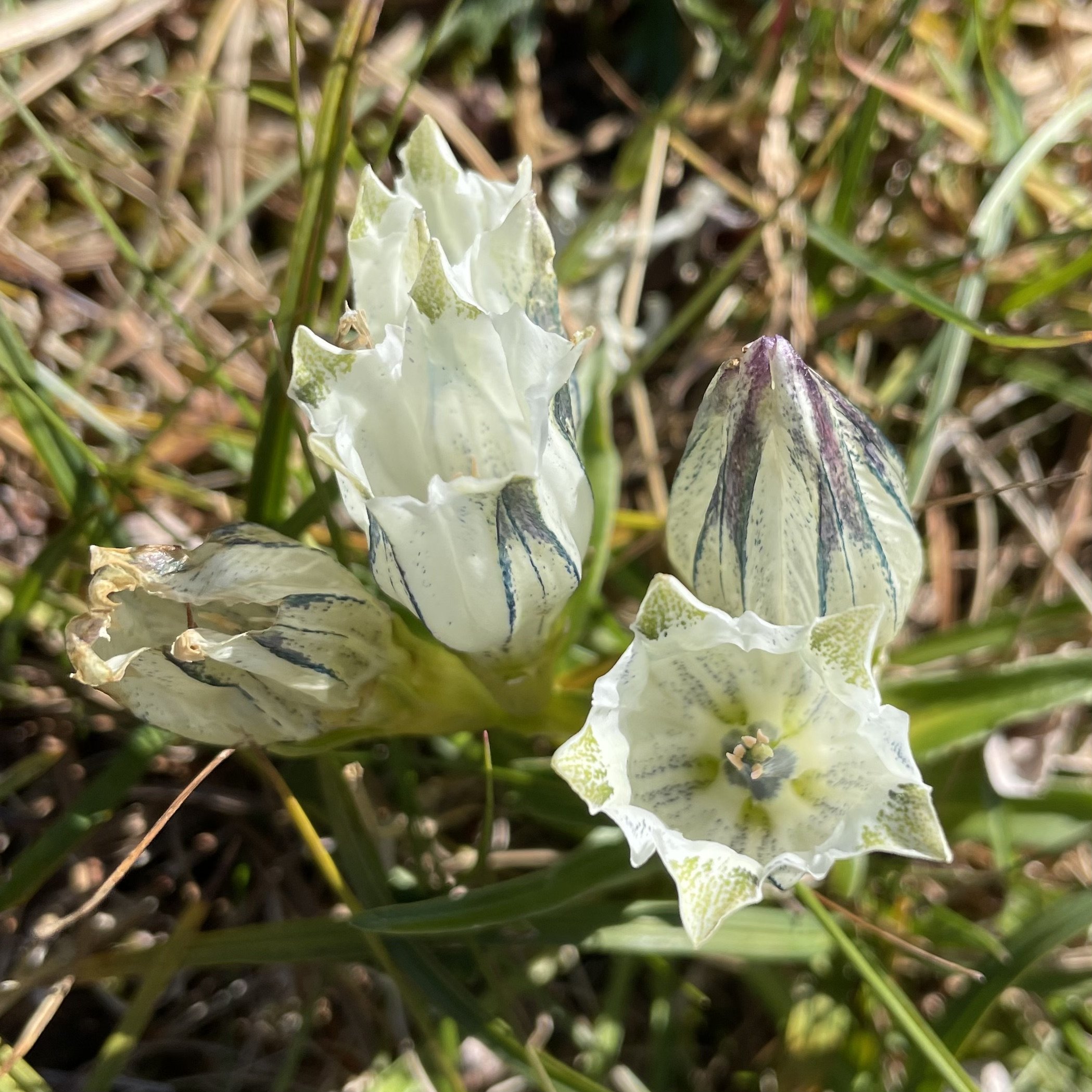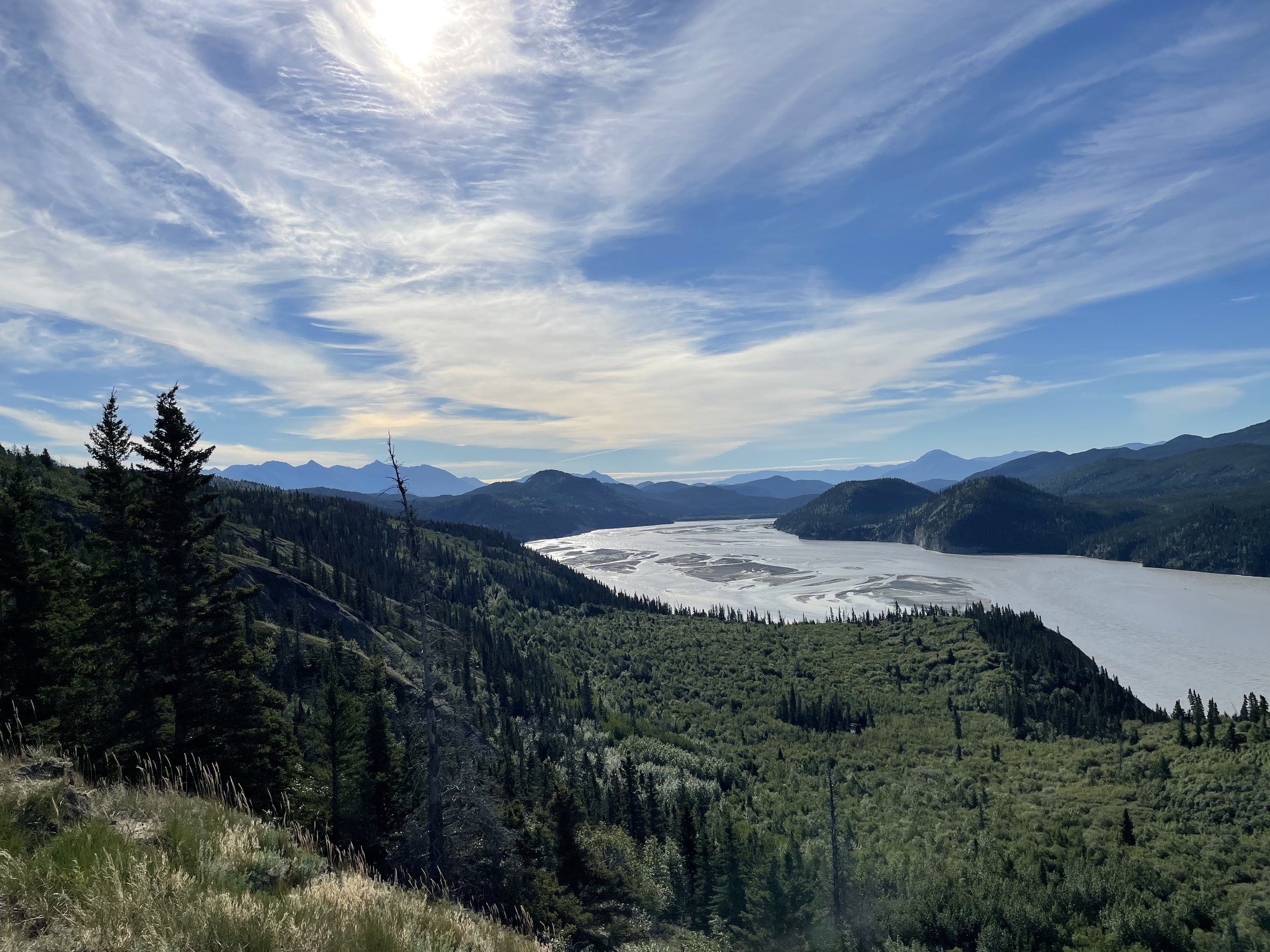Maybe it’s because my birthday falls in September; Autumn has always been my favorite season. In the DC metro area, I have to wait until late September or even October to see and smell those fall colors and scents and feel that cold rain. Here, we started noticing the changes in early August.
We arrived at Denali National Park in a chilly downpour which hung around for 4 days. It was the second week of August but it felt like November at home. On the last stormy night there was even snow at the higher elevations. We awoke to fresh white mountain peaks crisply outlined against a sky of deep cloudless blue.
There was a new feeling in the air. Fall was setting in.
One of the primary indicators of the season is a plant that we have seen everywhere in Alaska – fireweed. Fireweed grows along the side of the roads and highways, in every meadow, and at every elevation, all the way up to the tree line. In mid-summer it is in full bloom with merry purple flowers that seem to dance in the lightest breeze.
But toward the end of July, they began to change. At the bottom most flowers started to fall off, leaving behind a glowing red stalk (hence the name of the plant). As the next weeks passed the flowers continued to fall from the lower part of the plant up until, at last, just a fringe of purple was left at the top of each. Alaskans told us that when just the top flowers are left, winter is six weeks away, noting “It will be early this year.”
On our hikes too, we started to notice that the ground cover was changing as well -- deep greens giving way to oranges and reds and yellows. The leaves of the aspen trees are also starting to change to their iconic yellow that is so striking when the wind sets them to shimmering like gold. The ground is lush with berries and we have been enjoying some of the best blueberries I’ve ever tasted – sweet and tart and there for the picking in the mountain meadows – as long as there isn’t a bear who wants them too.
Perhaps most striking, however, has been the return of night. Since we entered Canada back in mid-June, night has been unknown to us. Throughout June and July, there was at most a brief twilight between sunset at around 12:30 am and sunrise at 3:30 am. We still go to sleep usually before sunset (currently about 11 pm here in Fairbanks) but when I awaken in the middle of the night for my, um, stroll to the washroom it is actually dark. I even saw stars a few nights ago. It is remarkable to think that in just about four weeks, the day and night will be of equal length.
Aside from the pleasure of seeing a dark sky again for the first time in months, the return of darkness also means we may have a chance to see the Aurora Borealis before we get too far south. I have never seen it and it would be a thrill.
On Tuesday, we took a 16 hour round trip bus ride to the Arctic Circle (the imaginary line marking the southernmost point at which the sun doesn’t go below the horizon on the summer solstice) and back with a small group of like-minded travelers. Several hundred miles further north, fall is well under way. Even at mid-day in full sun, the air was chilly, there was a strong wind and the colors of the tundra were muted.
As we begin to contemplate pointing the hood of the van southward, we should be able to follow the changing season all the way home, arriving home just as fall is beginning to get underway there. I expect it will be the longest Autumn of my life, other than, I hope, the metaphorical autumn of my life.
As insane as it sounds, I would love to return here in winter to experience what 40 below feels like and to see how never-ending night compares to never ending-day. Seeing Denali and the Arctic covered in snow must be as remarkable as seeing them in summer but it is also something far fewer people do.
I think of myself as fairly well-traveled, but pondering a map of the earth in the Yukon River Lodge, a rest stop on the way to the Arctic Circle, I realized just how little of the planet I have actually visited. There doesn’t seem to be enough time left for repeat visits when so much remains unseen. Yet, I now understand how Alaska gets under one’s skin (and no, I am not only thinking about the mosquitos). The vastness of the wilderness, so much of which feels pristine, the way humans manage to co-exist with bears, and moose, and caribou, and the color of the light is unlike anywhere I have been.
Alaska, it seems, is calling me back before I’ve even had a chance to say goodbye.












